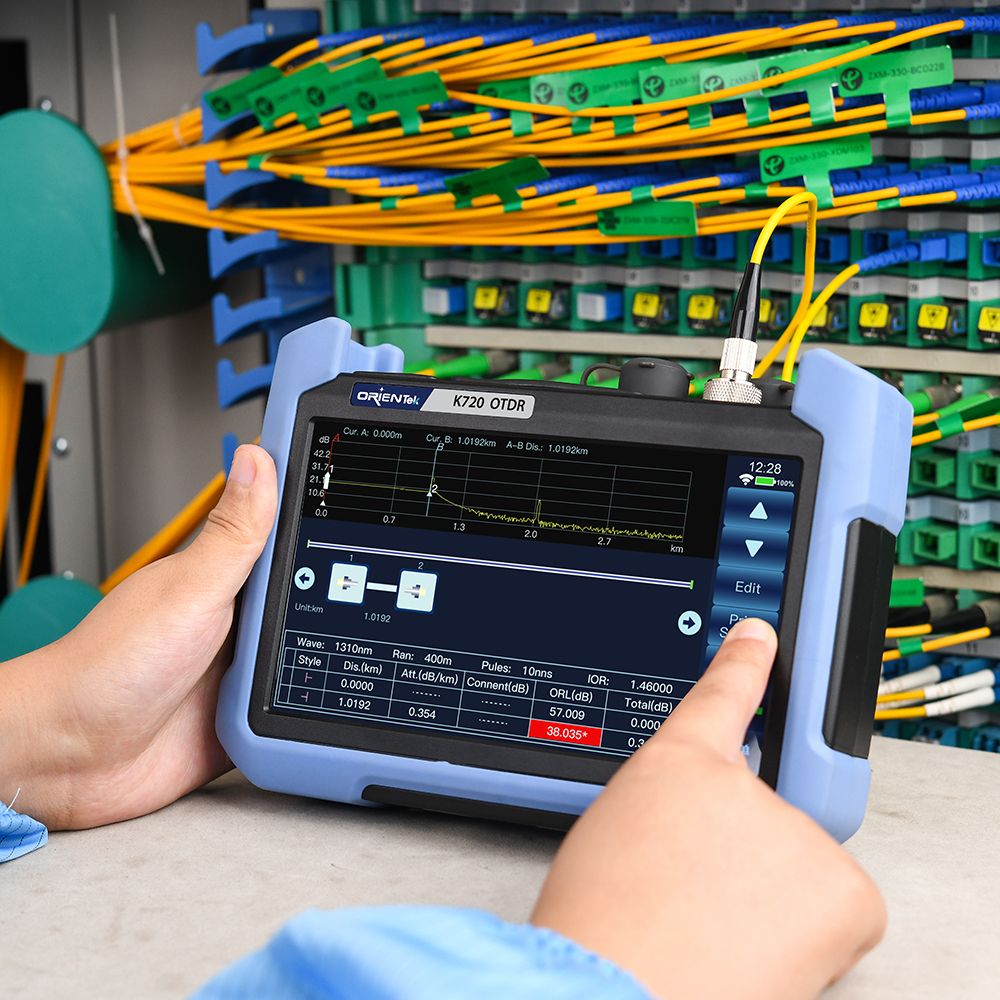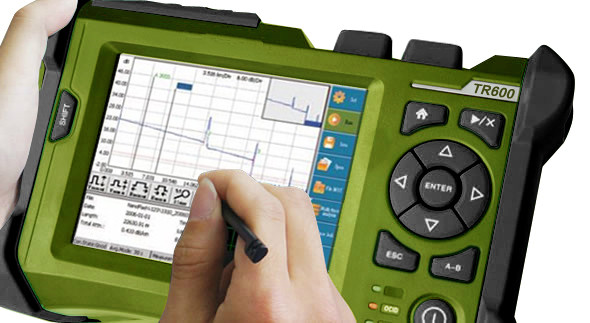OTDR is the abbreviation of Optical Time Domain Reflectometer. It is a fiber tester used to characterize optical networks supporting telecommunications. It can be used to measure loss, optical return loss (ORL) and optical distance on fiber links. In addition, OTDR can provide a graphical representation of the entire optical fiber link by providing the graphical trajectory characteristics of the fiber under test. However, there are too many OTDR brands on the market. Choosing the right OTDR for your application can be challenging. So the purpose of this article is to provide some suggestions when choosing an OTDR. Hope it can help you.

Why do you need OTDR?
As we all know, fiber optic testing is a basic procedure to ensure that the network is optimized to provide reliable and robust services without failure. Therefore, there are two reasons for the need for OTDR.
First, service providers and network operators want to ensure that their investment in fiber optic networks is protected. Installers need to use OTDR to perform two-way testing and provide accurate cable documentation to prove their work. Of course, OTDR can be used to troubleshoot problems, such as the location of an interruption due to excavation.
Secondly, the loss budget of the indoor optical fiber network is very tight, and there is less room for error. Therefore, the installer must use a light source and a power meter to test the overall loss budget, which is a difficult task. The OTDR can easily identify the cause of excessive loss and verify that the joints and connections are within the appropriate tolerance range, which saves a lot of time. In addition, this is the only way to know the exact location of the fault or interruption.
What will you test and where?
Before choosing the right OTDR, please ask yourself the following two questions.
Loss, reflectivity, splicing alignment and distance, which one do you want to test? Make sure that the OTDR you choose can easily, quickly, and accurately complete the work you want. If you need to perform "on-site" testing (for example, during the "hot cut" process-splicing fibers in a working cable), you need an OTDR that can perform active splicing loss measurement in "real time".
Where are you going for the test?
A full understanding of the application of OTDR will help you make the right choice for your specific needs. For example, what kind of network will you test? LAN (local area network), metropolitan area network or long distance? What is the maximum distance you may need to test? 700 meters, 25 kilometers, 150 kilometers?
What should I pay attention to when choosing an OTDR?
Many people may be familiar with OTDR, but do not know how to choose a truly suitable OTDR. In addition to focusing on quality, the following three factors should also be highly valued.
Simplified and task-centric user interface
Maintaining fiber health is also challenging and makes quick troubleshooting essential. Almost all OTDRs on the market today are designed to cover operator applications. Therefore, many OTDRs have very complex user interfaces that require users to understand numerous buttons and controls and navigate cumbersome multi-level menus. It is not conducive to users to improve operating efficiency. Therefore, a simplified and task-centric user interface testing equipment is very important.

Precision Fibre Channel Information
With the widespread use of short patch fibers and various types of fiber optic connectors, detailed information about network links—loss, connectors, and reflectivity—is critical to ensuring performance. However, OTDRs with an attenuation blind zone exceeding 3m are no longer suitable for testing data center optical fibers. But when something goes wrong, OTDR with accurate Fibre Channel information can help users of different skill levels effectively troubleshoot and accelerate network recovery.

Effective planning and documentation
As data centers evolve and change, ensuring that all fibers are installed with certified quality is a challenge. Therefore, an integrated project management function with cable-by-cable granularity can save time and planning work. The OTDR with built-in project management function allows users to plan daily activities without using a personal computer or laptop.
Generalize
Choosing a suitable OTDR to test your network can not only enhance its reliability, but also improve the efficiency of the test work and the quality of the recording work. Therefore, before choosing an OTDR, considering the application and specific needs of your test work will ensure that it is suitable for your application. FS.COM provides various OTDRs with different wavelengths such as 850nm, 1310nm, 1550nm, 1625nm, etc. You can find the one that best suits your network.

